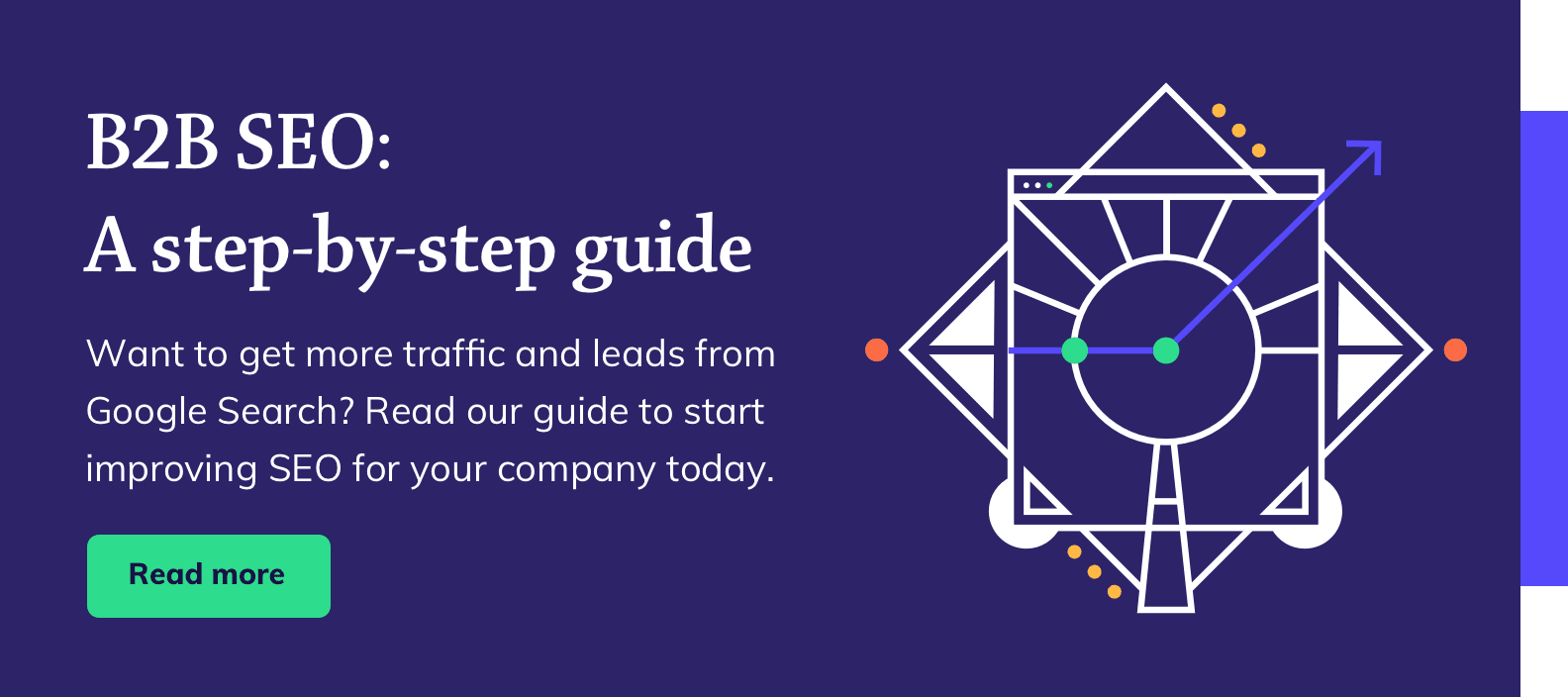Google is a notorious tinkerer. Each year, it makes subtle adjustments and updates to its search engine results page (SERP) – and 2019 was no different. Some of these were tiny, blink-and-you’ll-miss-them changes. But if they passed you by, they could cause some big problems for your B2B SEO strategy.
Let’s look at four you need to know about.
-
Ad labels are the new black
Apparently, Google thinks green is so passé. It used to make paid ads stand out from organic search results on mobile by using green breadcrumb text and borders on the paid ads. But earlier this year, they got rid of the colour and the border. Now a small, black ‘Ad’ label in bold font shows up next to the URL at the top.
Google hasn’t rolled out these ad labels on desktop yet, but it's been testing them so it's probably only a matter of time. And organic results have got in on the action too…
-
Organic results have favicon fever
Breadcrumbs for organic search results turned black, and now have a funky little favicon sitting next to them. If you haven’t got one set for your website, it'll try to pull an icon from your website. And if it can't find one from there, it'll slap a boring globe symbol on the search result instead.
So, if you don’t set a favicon, your results will look just like the flavourless paid ads sitting above it and get lost amongst your more colourful competitors. Or you’ll get lumped with whatever icon Google can find on your site, whether it works or not.
Pay attention to your favicons – they could make the difference between someone clicking through to your site or missing it completely.
3. Title tags are now a tiny bit shorter
This one was sneaky. At some point, Google shrank the maximum length of title tags on desktop by around five characters on average.
Maybe it made its font size slightly bigger, giving websites fewer characters to play with. Whatever the reason, it’s worth looking at your title tags. Some of them might have been cut off after the change, potentially messing up a visitor’s first impressions of your site.
Speaking of first impressions…
4. Looks are everything for local businesses
You can now browse local businesses through photos and images thanks to a new ‘search by photos’ option on mobile. A search for ‘office furniture near me’, for example, will return photos of desks and workspaces, overlaid with the name of the business that sells them and its star rating.
These images appear shortly after the top local results and click through to the Google My Business profile. However, they currently don’t have a fixed position on the page and won’t always appear for businesses where visual appeal isn’t as important (the feature doesn’t show up for plumbers or banks, for instance).
Optimising images is an important part of any good B2B SEO strategy, and ‘search by photos’ is another factor to keep in mind. You’ll need some high-quality, up-to-date photos on your Google My Business profile if you want your business to stand out on the results page. This includes having multiple images for each key product category that your customers might search for. Think about your star rating, too. If you’re low on good reviews, try coaxing some out of your satisfied customers so you can compete with the high scorers.
More SERP changes to come?
Google will keep on tinkering – we can be sure of that. There’ll be more tweaks in store for Google’s SERP in 2020. If you don’t keep a beady eye on them, even a tiny adjustment could affect your rankings and traffic.
It’s always worth remembering that B2B SEO isn’t a once-and-done exercise. You can’t write metadata and then ignore it for years, or have low-res, decades-old profile pictures representing your business. Staying visible means constantly adapting to the latest SERP developments, no matter how small.
What's the secret to B2B SEO success?
Of course, good SEO takes more than just watching for Google’s next update. It’s a complex and often misunderstood beast. If you want people to find you on the SERPs, you’ve got to be killer with keyword research. You need web pages that are optimised to perfection. You’ll have to know your way around keyword topics. And that’s just the start.
But the effort is worth it. Develop a solid, adaptable B2B SEO strategy, give it a bit of time and patience, and you'll soon be climbing the rankings.





